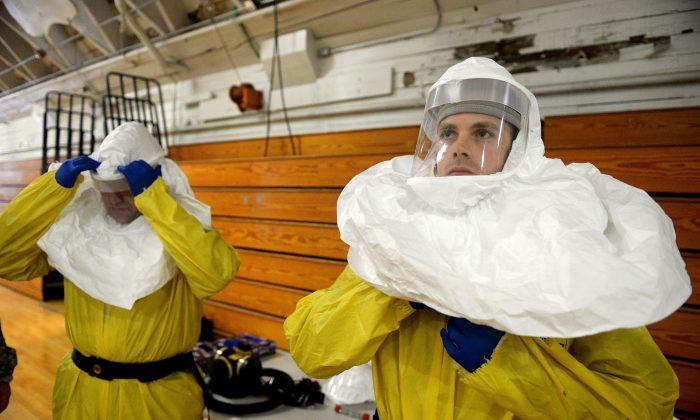A team of scientists has made new calculations about how the Ebola epidemic will develop, its scale, and perhaps how to stop it from spreading.
The researchers used a statistical program they developed to calculate the viral reproductive number, which is the average number of infections caused by a single infected individual.
They also analyzed the length of incubation and infectious periods. Their calculations are based on the gene sequence of the virus in various patient samples.
The virus sequences were obtained by American, British, and Sierra Leonean researchers from blood samples taken from patients in Sierra Leone in the first few weeks after the epidemic migrated to the country from neighboring Guinea in May and June 2014.
Newer sequences are currently not publicly available, says team leader Tanja Stadler, professor of computational evolution at ETH Zurich.
From the data, the researchers calculated a viral reproductive number of 2.18. This value is in the range of the previous estimated values based on the incidence and prevalence of the disease, which are between 1.2 and 8.2.
“A major benefit of our method is that we can use it to calculate unreported cases and therefore the true scale of the epidemic,” says Stadler.
They report their findings in PLOS Currents.
Unreported Cases
Official patient figures only take into account those cases reported to the health authorities. The actual number of infected persons is generally significantly higher. Using the data made available to them, the ETH researchers were able to calculate an unreported case rate of 30 percent.
“However, this applies only to the situation analyzed in Sierra Leone in May and June. We do not have any blood samples since June at all,” notes Stadler.
The researchers were also able to calculate the incubation period for Ebola—five days, although this value is subject to significant uncertainty—and the infectious time. Patients can pass on the virus from 1.2 to 7 days after becoming infected.
To obtain these values, the researchers created a phylogenetic tree based on the gene sequences of the virus samples.
“The Ebola virus changes in the body of the patient from day to day, meaning that the virus sequence varies slightly from patient to patient,” explains Stadler.
With the knowledge of the different sequences, the researchers were able to determine at what point in the past infection events happened between patients. From this, they were able to calculate the epidemiological parameters.
Already Tested for HIV
These epidemiological values are important in developing strategies to contain the epidemic and evaluate the effectiveness of these measures. Imposing a curfew is one measure.
“If the curfew lasts longer than the incubation period, then only those people who continue to show symptoms of Ebola are carriers of the disease,” says Stadler.
In turn, the reproductive number is one of the most important benchmarks used by health services. The most pressing aim of these authorities is to reduce the reproductive number to a value lower than one, as this would imply that the epidemic has been contained.
The ETH researchers developed the computer program used to calculate these figures during the past few years and applied it to data collected from HIV and hepatitis C patients. They now hope that new sequences of the currently circulating Ebola virus become available, despite the adverse conditions in the areas affected by the epidemic.
“Our program is ready,” says Stadler. “If we are given access to current Ebola sequences, we will be able to gain a detailed insight into the spread of the epidemic literally overnight.”
Source: ETH Zurich. Republished from Futurity.org under Creative Commons license 3.0. Read the original.





